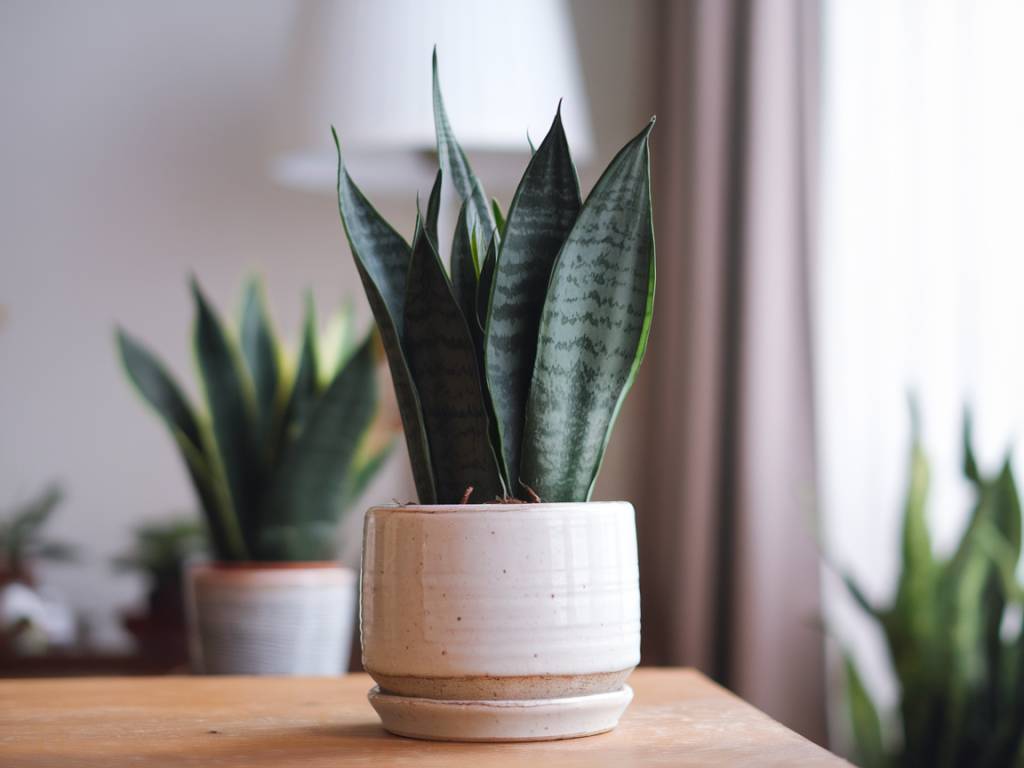When it comes to low-maintenance greenery that brings an air of elegance to both indoor and outdoor spaces, the snake plant (Sansevieria) stands out as a favorite. As a gardener, I’ve embraced the beauty and resilience of this remarkable plant. Today, I want to share with you the secrets of growing and caring for snake plants, ensuring that they thrive in your garden or home.
Selecting the Right Location
One of the reasons I adore snake plants is their incredible adaptability. Whether you have a sun-drenched garden or a dimly lit corner in your home, snake plants can adjust and flourish. However, for optimal health, consider the following tips:
Light: Snake plants prefer bright, indirect light but can tolerate lower light levels. For indoor settings, place them near a north-facing window or a spot where they receive filtered sunlight. If you’re growing them outdoors, a shaded or partially shaded area works best.
Temperature: Snake plants are hardy and can survive a wide range of temperatures. Ideally, keep them in a space where the temperature ranges between 15°C to 24°C. Avoid exposing them to temperatures below 10°C, as they are susceptible to cold damage.
Choosing the Right Soil
Healthy soil is fundamental for the growth of any plant, and snake plants are no exception. These resilient plants thrive in well-draining soil. Here’s what I’ve found works best:
Soil Type: A cactus or succulent mix is ideal for snake plants. If you prefer making your own mix, combine one part garden soil, one part perlite, and one part sand. This ensures excellent drainage, preventing the rhizomes and roots from rotting.
pH Level: Snake plants aren’t particularly fussy about soil pH but thrive best in a slightly acidic to neutral range (pH 6.0 – 7.0).
Pot Selection
The right pot can make a significant difference in your snake plant’s health. When selecting a pot, consider the following:
Drainage: Always choose a pot with drainage holes to prevent water from accumulating at the bottom.
Material: Terra cotta pots are my personal favorite as they allow for better air circulation and prevent excess moisture build-up. However, plastic pots can also work if you are mindful of your watering habits.
Size: Snake plants grow outward in a rosette pattern and can become top-heavy. Opt for a pot that offers enough space for growth and balances the plant’s height.
Watering Practices
One of the joys of caring for snake plants is their low water requirements. Here’s how I keep mine hydrated and healthy:
Frequency: Watering once every two to three weeks works well. Allow the soil to dry out between waterings. In winter, reduce the frequency even further.
Method: Water thoroughly but ensure excess water drains out to avoid waterlogging. Avoid getting water on the leaves as this can lead to rot.
Providing Nutrients
While snake plants are not heavy feeders, occasional fertilizing can promote robust growth. Here’s my approach:
Type: Use a balanced, liquid houseplant fertilizer diluted to half strength.
Frequency: Fertilize sparingly, about once every month during the growing season (spring and summer). Skip fertilizing in fall and winter when the plant is in its dormant phase.
Propagation Tips
Snake plants are incredibly easy to propagate, making them wonderful for sharing with friends or expanding your collection. Here are the methods I’ve found successful:
Division: When your plant outgrows its pot, gently remove it and separate the rhizomes with a sharp knife, ensuring each section has a healthy root system. Plant each division in a separate pot with fresh soil.
Leaf Cuttings: Cut a healthy leaf into 3-4 inch sections and allow the cut ends to callous over for a day or two. Plant the cuttings in a well-draining soil mix, making sure the ends are buried an inch deep. Water sparingly until roots develop.
Pest Management
Snake plants are relatively pest-resistant, but occasionally, they may be attacked by common houseplant pests such as mealybugs, spider mites, and aphids. Here’s how I manage them:
Identification: Regularly inspect your plant for signs of pests like white, cottony masses (mealybugs), webbing (spider mites), or sticky residue (aphids).
Treatment:
- Wipe the leaves with a damp cloth to remove pests.
- Use a neem oil solution or insecticidal soap for severe infestations. Spray the affected areas thoroughly, repeating as necessary.
- Maintain good air circulation and avoid overwatering to prevent pest problems.
Dealing with Common Problems
Even with the best care, snake plants may sometimes exhibit signs of stress or disease. Here are some common issues and solutions:
Yellowing Leaves: Often a sign of overwatering. Allow the soil to dry out and adjust your watering schedule.
Brown Leaf Tips: This could be due to low humidity or underwatering. Ensure the plant gets adequate, but not excessive, moisture.
Root Rot: Usually caused by poor drainage or overwatering. Remove the affected roots, repot in fresh, well-draining soil, and be cautious with future watering.
Enjoying Your Snake Plant
One of the many joys of gardening is watching your plants thrive and grow. Snake plants not only beautify your space but also purify the air, making your home healthier. Their low-maintenance requirements make them perfect for both seasoned gardeners and beginners alike.
As you embark on your journey with snake plants, remember that a little care goes a long way. Provide them with the right environment, occasional watering, and the occasional feeding, and they will reward you with their stunning, upright foliage and vibrant presence.
Happy gardening!
Samanta
